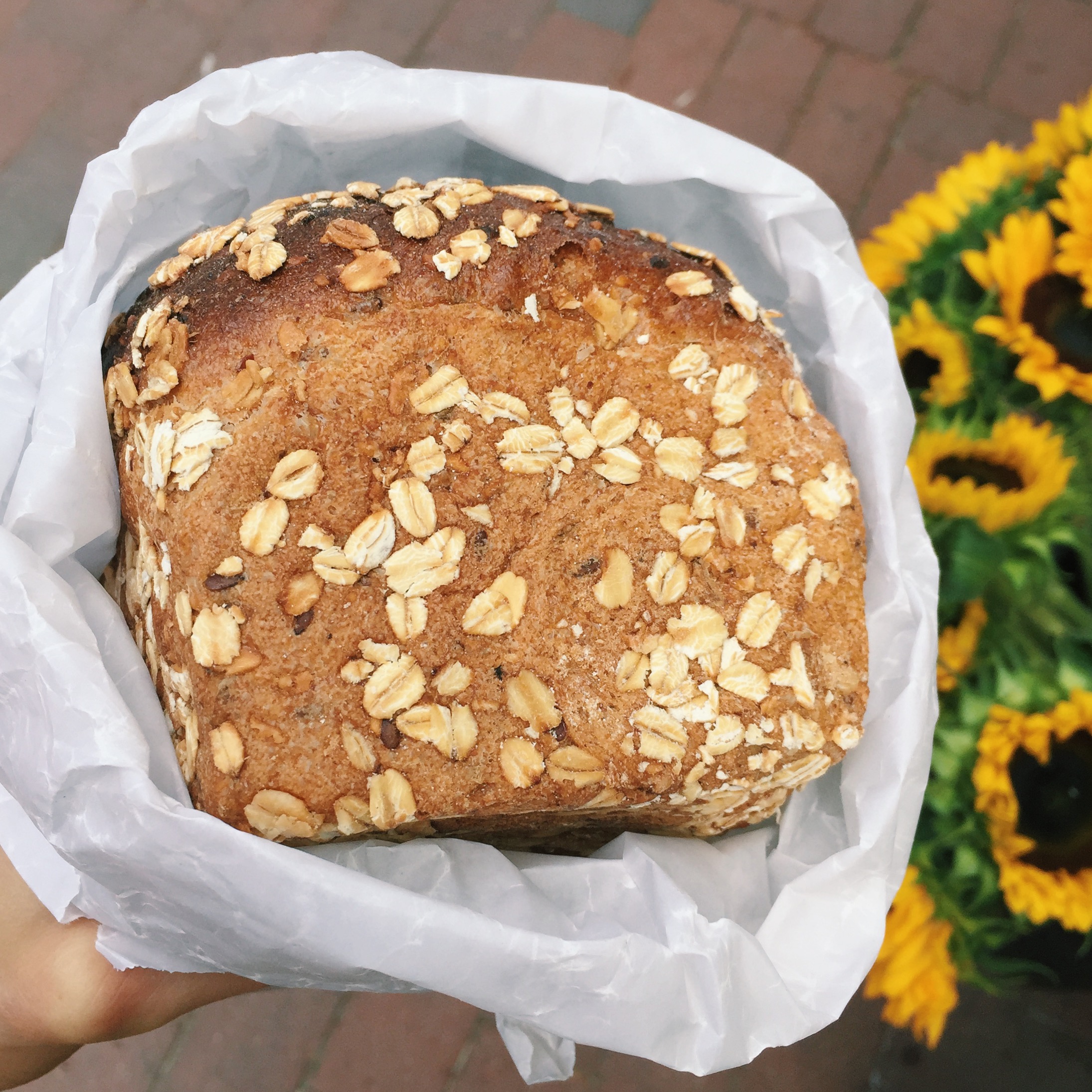Share This
Most whole grain breads are made with whole grains that have been milled into fine particles to form a whole grain flour, in a mixture that contains all of the grain kernel’s original bran, germ, and endosperm. This milling process is what allows us to enjoy bread as we know it today — one with a soft texture, an airy rise, and a pleasant crumb. But what if you want to up the ante a little? If ground whole grains are great, might intact whole grains be better?
Intact whole grains – particularly the smaller or softer ones, like millet, buckwheat and teff — can add a delightful crunch to traditional baked goods, such as the millet in Joanne Chang’s famous WholeFlour Breakfast Cookie. A variation of this approach is also gaining traction in the beer industry, with a growing number of eco-conscious brewers mixing the spent grain (not technically whole grain anymore) from the beer making process into bread dough, in a process that minimizes food waste and maximizes flavor.
For the most part, however, a bit of soaking — or better still, cooking — is what will coax the intact grains into a form that’s a little more versatile for baking (and might also save a few trips to the dentist). Food & Wine’s Rye Berry Bread, made with 1 part whole rye berries to 8 parts whole wheat and rye flour is a beautiful example of this approach.
Quick breads, such as spice cakes and banana breads, are exceptionally suitable candidates to be filled with any number of (cooked) intact whole grains. Judith Finlayson’s Amaranth Banana Walnut Bread has 1 part cooked amaranth to 2 parts whole wheat pastry flour. Similarly, Posie Brien’s cinnamon and nutmeg scented Carrot Tea Bread is studded with a particularly surprising ingredient – cooked wild rice. The result, as she explains, is “fantastically dense in just the right way.”
If you really want to give your jaw a workout, a no-flour bread made from intact grains is certainly possible. About a decade ago, the WGC team actually visited a commercial bakery (owned by Lantmannen) in Denmark where they made one variety of their rye bread almost entirely from soaked and fermented rye berries (whole rye kernels). The only flour in the loaf was a tiny bit of flour in the sourdough starter. As we recall, the whole process took more than 48 hours, and basically involved soaking and fermenting the kernels until they had become quite softened, mixing in a bit of sourdough starter, letting it rise a long time, and then baking it very slowly.
We’ve yet to come across a recipe that approximated the rye bread we saw made in Denmark, but here’s one recipe that uses some interesting ingredients to create a no-flour loaf. For a sweet snack that’s a bit more forgiving on your mouth muscles, Leslie Cerier concocted a fruity millet cake made simply from cooked millet (which was simmered in apple juice) pressed together in a cake pan, studded with raisins, and set to chill and firm up.
After sharing similar advice with an Australian reader seeking a no-flour whole grain bread, the reader reported back with his own observations. “Absolutely fabulous!” he wrote us. “As well as being delicious & nourishing these loaves could be used in construction — dams, skyscrapers, major projects. This may be how the Danes invented Lego.”
We can’t vouch for the engineering possibilities of no-flour whole grain breads, but we’re certainly intrigued by their culinary and nutritional resume. For a slightly more versatile approach, substituting some of the flour in baked goods with intact whole grains sounds like a delicious place to start. (Kelly)



Comments
Add a Comment